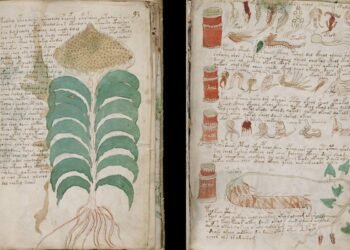An Egyptian mission led by the Supreme Council of Antiquities has uncovered what is believed to be the first and largest astronomical observatory from the 6th century BCE at the ancient Buto Temple, located at the Tell El-Fara’in archaeological site in Egypt’s Kafr El-Sheikh Governorate.
The observatory, constructed from mudbrick, was a significant center for tracking and recording astronomical phenomena. It was used to observe the movements of the sun, moon, and stars, and played a crucial role in establishing the dates of religious festivals and official ceremonies, such as royal coronations and the beginning of the agricultural year.
“It highlights the advanced astronomical knowledge of the ancient Egyptians, including their ability to determine the solar calendar and significant religious and agricultural dates,” Dr. Mohamed Ismail Khaled, Secretary-General of the Supreme Council of Antiquities, told Ahram Online. The observatory’s design and artifacts demonstrate how the Egyptians used astronomy to align their religious and daily practices with celestial events.
The observatory itself is an expansive structure covering approximately 850 square meters and features a central L-shaped hall made of mudbrick, resembling the pylon entrances of ancient Egyptian temples. The entrance faces east, allowing sunlight to illuminate the interior during specific times of the year, further emphasizing the building’s purpose in astronomical observation. Within this hall, a stone platform engraved with depictions of astronomical alignments, such as the sunrise and sunset during the different seasons of the Egyptian year, was uncovered. The engravings also include measurements that were likely taken through the temple’s eastern and western doors.
One of the key findings at the site is an inclined stone sundial, known as a shadow clock, which was used to measure time based on the sun’s position. This sundial consists of a straight row of limestone slabs, approximately 4.80 meters long, with several vertical and horizontal blocks that may have been used to measure the angle and shadow of the sun throughout the day. Dr. Ayman Ashmawy, head of the Egyptian Antiquities Sector at the Supreme Council of Antiquities, described this sundial as one of the most significant artifacts found, illustrating the Egyptians’ skill in timekeeping and their understanding of solar movements.
In addition to the observatory itself, the excavation team discovered a wealth of artifacts. Among these are a statue from the 26th Dynasty depicting the priest Psammetichus Smen holding a statue of the god Osiris, various measuring tools including a “merkhet” used for astronomical calculations, and several faience necklaces and pottery pieces used in religious ceremonies and daily life. These findings underscore the observatory’s dual role as both a scientific and a religious site.
Located between the branches of the Nile and near Butic Lake, Tell El-Fara’in, also known as the ancient city of Buto, was a ceremonial center dedicated to the goddess Wadjet, the matron and protector of Egypt. The city’s proximity to natural waterways and its position in the fertile Nile Delta likely contributed to its prominence as a center for both religious worship and scientific observation.






















